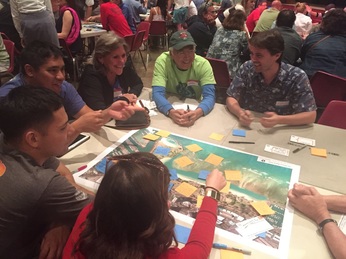 TOC members participate in public meeting on possible renovations to Ala Moana Beach Park. TOC members participate in public meeting on possible renovations to Ala Moana Beach Park. Mayor Caldwell is proposing a major, multi-year renovation of Ala Moana Park. He is seeking public input on how to improve Hawaii’s “People’s Park” through an online survey website: www.ouralamoanapark.com. Please jump in and get involved! At the first public meeting on the idea of renovating Ala Moana Park, the Mayor said all options are on the table and that he is open to any and all ideas. That could be a good thing, it could also be a bad thing -- all depends on which ideas are floated. That is why The Outdoor Circle along with many other concerned organizations and residents are keeping a watchful eye on this process. We could use your help to make sure no important details are missed. The Mayor did announce that the park will pilot a new form of public restroom and repave the running track around the park. Some of the ideas and concerns already raised at the public meeting and online include:
More to come in the next few weeks! Please contact us here if you are interested in being more involved in this public consultation process. 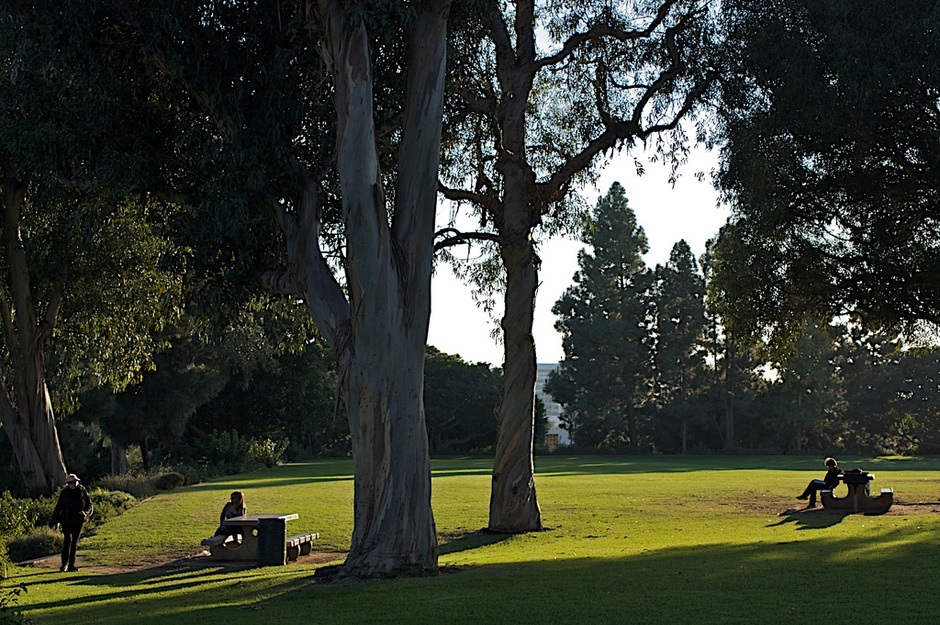 Culvert City in Los Angeles was featured in CityLab's article "You want your city to thrive? Look to its trees". It is a very informative, quick read that highlights the valuable information we can learn about our urban forests through the i-Tree program developed by the USDA. Check it out and find out the economy value of the trees in your yard and throughout your community. The article also highlights the value of old-growth trees to the overall health of cities and the need to have an urban forest master plan to ensure our cities' forests thrive for future generations. Of course, most interesting to us is what CityLab had to say about tree maps -- and it is all good: "Mapping exercises are incredibly useful for urban forestry," says Pamela Palmer, a landscape architect and president of Artecho, the design firm that's working with Culver City on its plan. "They help us fine-tune which trees to plant where and identify areas where a change in planting strategy is needed." Herbertson adds that easy-to-read maps and charts generated from Culver City's tree inventory have been effective tools for generating public interest and feedback, and believes they'll encourage buy-in and approval from the city council. And not to put too fine a point on it, they reminded us that: Increasingly, cities have recognized that trees provide not only environmental benefits and curb appeal—they're also good for business. 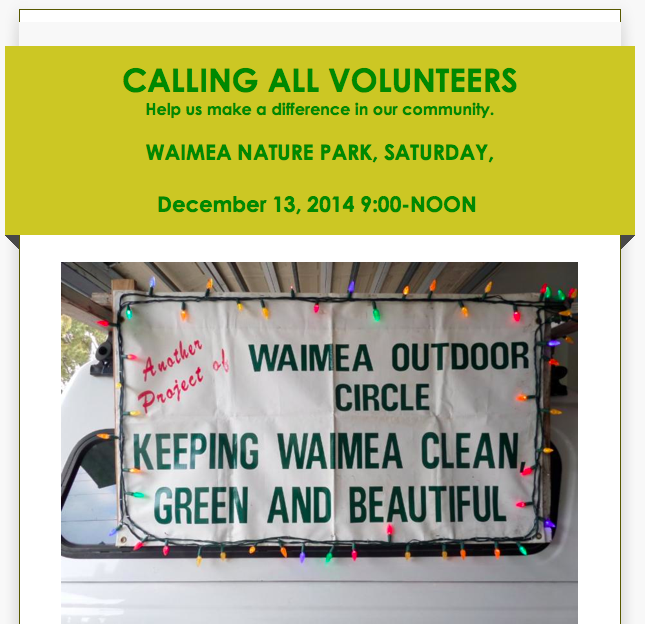 Waimea Outdoor Circle announces another volunteer day in Ulu La'au, the Waimea Nature Park, this Saturday, December 13, 9:00-Noon. Jobs to do: Taking down a multi-trunk mao hau hele which is leaning over a walking path in lower bed "E". Taking down a dead koai'a in bed "D". There are jobs for all ages and abilities, no knowledge of Hawaiian plants is necessary, we will happily train. Water, gloves and tools are provided as is a snack of fresh fruit and home baked cookies served at noon. Waimea Nature Park is a project of Waimea Outdoor Circle created joyfully by 100% volunteer work from everyone, including people like you. The park is open during daylight hours and closes at 5:30 PM. The park is located directly behind Canada France Hawaii Telescope offices on Mamalahoa Hwy. Look for the Hawaiian Warrior sign on the CFH lawn and turn into the no name road there that leads directly into the park. Please do not park on the CFH lawn, the Nature Park has plenty of parking available. See waimeaoutdoorcircle.org for a map and other information. Or contact park co-chairs Carol Hendricks at 885-4453, Roz Wright at 885-2763 or park maintenance chair Ken Block at 885-4753. Photo credit: one of our banners mounted on Ken's truck, ready for the Christmas parade, photo by Ken Block 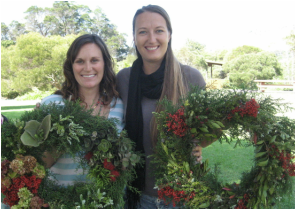 In the first weekend of December the Waimea Outdoor Circle hosted their annual wreath-making class. They also gave away 250 trees at the Holiday Parade through Waimea town. The wreath-making class was held at the Waimea Nature Park and featured greenery gathered from the slopes of Mauna Kea. Waimea Nature Park -- ‘Ulu La‘au -- is a project of Waimea Outdoor Circle created joyfully by 100% volunteer work from everyone, including people like you. The park is open during daylight hours and closes at 5:30 PM. The park is located directly behind Canada France Hawaii Telescope offices on Mamalahoa Hwy. Look for the Hawaiian Warrior sign on the CFH lawn and turn into the no name road there that leads directly into the park. Please do not park on the CFH lawn, the Nature Park has plenty of parking available. See waimeaoutdoorcircle.org for a map and other information. Or contact park co-chairs Carol Hendricks at 885-4453, Roz Wright at 885-2763 or park maintenance chair Ken Block at 885-4753. Long time TOC supporter, Joel Kurokawa (TOC President) is an advocate for The Complete Streets program. Joel and his staff at Ki Concepts invited TOC to participate in the parklet event in Kaimuki on September 19, 2014. Here is an article from the Kokua Line that answered questions on parklet information. Click here to be directed to the Honolulu Clean Cities website. PARK(ing) Day 2014Long time Outdoor Circle supporter Joel Kurokawa and his staff at Ki Concepts held a demonstration to bring awareness of parklets. A parklet is a small area next to the sidewalk that provides amenities and green space in urban communities. Despite being exceptionally hot, Joel and his staff provided information to everyone using the sidewalk fronting Waialae and 12th Ave. The City and County of Honolulu, has adopted an ordinance for parklets, and we look forward to more green space in urban areas. Click here for more information. Photos from PARK(ing) Day 2014!
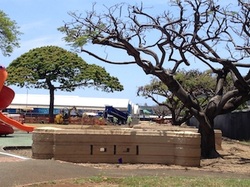 Mother Waldron Park in Kaka'ako, Honolulu Mother Waldron Park in Kaka'ako, Honolulu "OUR VIEW: Hawaii's parks need attention" Editorial from the Honolulu Star-Advertiser on Saturday, Jun 07, 2014 Thanks to the editorial board of the Honolulu Star-Advertiser for highlighting the critical need to invest in our public greenspaces. Below are excerpts of their editorial. Also, big mahalo to the Trust for Public Land for publishing an excellent report ranking Honolulu against other major cities on the quality of its parks. We could not agree more! With your support organizations like The Outdoor Circle can collaborate to improve public park space throughout the Hawaiian Islands! Click here to show your support! "As Oahu's population increases and urban redevelopment crowds more people into the close quarters of high-rise living, creating and preserving vibrant green spaces for recreation and relaxation must be a higher priority. It's much better for the city if those green spaces are on ground level, open to all, rather than private aeries limited to the wealthy denizens of a single luxury building. 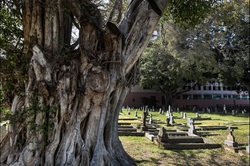 Image by PF Bentley, Civil Beat Image by PF Bentley, Civil Beat By Marti Townsend, Executive Director Two aggressive pests threaten the future of Banyan trees in Hawai‘i. The Lobate Lac Scale, known as the “vampire bug” sucks the life out of Chinese Banyans, native Hibiscus, Koa, and about 300 other tree and plant species. So far this scale is found only on Oahu. The Stem Gall Wasp burrows into branches at the base of each stem making it impossible for Chinese banyans to grow new leaves; it has already invaded O‘ahu, Maui, and Hawai‘i Island. In less than two years, these two aggressive bugs have forced the removal of dozens of banyan trees for safety reasons. Iconic banyan trees have been removed due to these pests at Moanalua Gardens, Thomas Square Park, Kapiolani Park, Washington Place, along the Ala Wai, and the International Marketplace. Chinese banyans at the National Cemetery, UH-Manoa, the Catholic Cemetery on King Street, and Ala Moana Park are infected and undergoing treatment. Despite considerable effort, arborists have yet to find effective treatments for the pests, and in some cases the treatment can be as bad as the disease. While experts continue the search for a cure, The Outdoor Circle is working hard to plant new trees to replace the those being lost to these infestations. It is important for City and State officials, as well as private land-owners to undertake tree-planting with a determination equal to the feracity of these tree-killing bugs. “We can’t just plant any kind of tree where these Exceptional and majestic trees once grew,” said TOC President Alexandra Avery. “We need to have the vision and commitment to plant trees now that have the same potential for greatness as the iconic trees we are now losing. This is the only way to ensure there are still Exceptional Trees in the ground for the future generations of Hawai‘i.” TOC is pleased to report that Washington Place is already preparing to plant trees to replace the 75-year-old Chinese Banyan lost there. Replacement tree plantings and tree relocations are currently being planned for Kapiolani Park and the International Marketplace, while planting plans are being developed for Thomas Square and Ala Moana Park. Learn More: Oahu’s banyan trees under attack, many dying by Denby Fawcett, Civil Beat Tree pest leads to removal of Waikiki Banyan Trees, KITV News You can help! Counter the loss of iconic and Exceptional trees on Oahu and throughout the Hawaiian Islands by becoming a member and supporting The Outdoor Circle’s “Exceptional Tree Initiative.” Click here to make a secure, online donation now. We are committed to planting as many trees with the potential to become truly “Exceptional Trees” as possible. 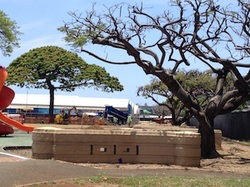 Black tarps currently surround Mother Waldron Park, a registered historic landmark and a beloved urban park in downtown Honolulu. The park is undergoing renovations as part of the mitigations for the newly completed Halekauwila Place. Stanford Carr Development committed to improving the park by planting 15 new trees, including a new Royal Poinciana on the ewa-makai corner of the park, as well as repair the park’s irrigation, re-seed the grassy open area, and renovate the playcourts. Renovations are expected to take several months to complete. The Outdoor Circle will be keeping watch over the renovations, so you can expect project updates to be posted here. 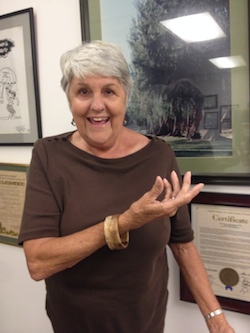 Local woodworkers volunteered to turn trees killed by vandals into beautiful works of art, and donate the majority of proceeds to the Waimea Outdoor Circle. 20 years ago, WOC helped volunteers landscape and plant trees in the newly opened Anuenue Playground. Two years ago, vandals stripped the outer bark from seven of the trees, ultimately killing them. While WOC volunteers set to work re-planting the playground with Ohia trees, woodworkers set to turning the dead Koa trees into bowls, bracelets, and another beautiful works of art. The woodworkers have generously given 75% of all proceeds from the sale of these pieces to WOC in support of keeping this amazing community clean, green, and beautiful. Read more: http://northhawaiinews.com/sections/news/salvaging-something-positive.html 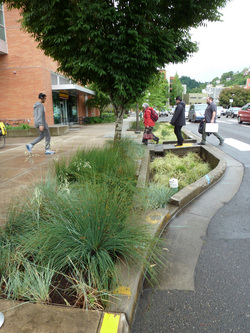 From the Alliance for Community Trees, Seattle, WA (April 2, 2014): University of Washington researcher Kathleen L. Wolf recently made the case in "Stormwater Report" for trees and green infrastructure to both manage stormwater runoff and also offer a host of health benefits. According to Wolf, “Every small patch of nature in cities and built areas can be ‘hyperfunctional’ and provide co-benefits. While performing the primary purpose of stormwater management, green infrastructure also can be designed to augment park systems and provide places of respite, recreation, and delight.“ The article, “Water and Wellness: Green Infrastructure for Health Co-Benefits,” shows that “with careful design, green spaces can manage runoff and provide a range of co-benefits. Integrated planning of green infrastructure and parks systems helps to cost-effectively provide multiple benefits and contributes to more livable communities.” Wolf studies the human dimensions of urban forestry and urban greening. In this roundup of research, she outlines the great opportunity for bridging urban forestry and urban greening into the realms of public works and civil engineering. Wolf cites precedent for this approach. While once land use was segregated, today green infrastructure installations can be integrated with citywide parks and green spaces. And designing green infrastructure for stormwater management as well as co-benefits, particularly human health, can include a broader set of economic returns. “Green infrastructure that provides better human habitat is a win-win for community buy-in.” Wolf reports on a the small but growing sample of evidence about the importance of nearby nature in cities and towns, and the benefits to the environment and human well-being. Here are a few of the benefits she highlights and how they can co-exist with green infrastructure to support stormwater management:
Read the full article, “Water and Wellness: Green Infrastructure for Health Co-Benefits.” Visit Green Cities: Good Health, a University of Washington project which features a collection of more than 2,800 scholarly works, most peer reviewed, which demonstrate how trees, parks, gardens, and natural areas enhance quality of live, and improve human health. Photo credit: Kathleen Wolf 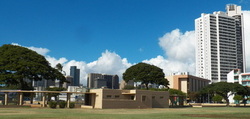 Thanks to our Board Member, Dr. Jeremy Lam, for contributing to this post. The State agency which oversees the development of Kaka'ako has been criticized as being excessively pro-development. Bill 1866, which seeks to improve oversight and transparency at the Hawaii Community Development Authority (HCDA), passed the Hawai'i Legislature this week and was sent to the Governor for his signature. This bill allows greater public input, promotes greater transparency, provides recourse for communities through a contested-case hearing process, ensures more balance to the appointed board, and emphasizes the importance of maintaining height and distance requirements in building projects. The Governor has until April 24th to veto the bill, sign it into law, or allow the bill to become law without his signature. Of the many bills introduced by Representative Scott Saiki to reform the HCDA, this is the only one that survived the legislative process. Representative Saiki told Pacific Business News, "House Bill 1866 will allow us to ‘reboot’ HCDA and allow it to refocus on its mission, provide greater transparency in its operation and decision making, and allow the public to have greater input in its deliberations. At the end of the day, it will help HCDA create a community that is more livable, more productive and that better reflects our island values, lifestyle and sensibilities.” The Outdoor Circle is particularly concerned with ensuring that public greenspace and mauka-to-makai view planes are enhanced -- not undermined -- by the rush to develop the Kaka'ako area. Mother Waldron Park in the heart of Kaka'ako mauka was given to the city in the 1930's specifically to ensure the public had open green space to enjoy, as the downtown financial district expanded eastward. Read TOC's position statement on Kaka'ako: 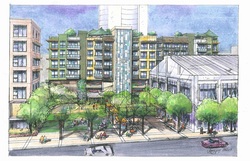 Check out this new article on the challenge of ensuring sufficient open space in the new Kaka'ako: "Open Space in Kaka'ako" by Denby Fawcett in Civil Beat Who knew that one day we would have to make clear that open space means: open to the public, outside, and on the ground. "Open space" that is only accessible to building tenants is the vertical version of a private park. While this might be all fine and good for tenants of the building, it does not ensure a good urban design and sane quality of life for residents. And, it definitely should not count towards the trade-off when government allows developers to build outside basic building standards -- like set-backs. |
Welina!The Greenleaf is the online newsletter and blog of The Outdoor Circle. Here you will find updates on the projects and accomplishments of our many branches throughout the state, as well as programs with statewide impact. Archives
September 2023
Categories
All
|
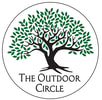
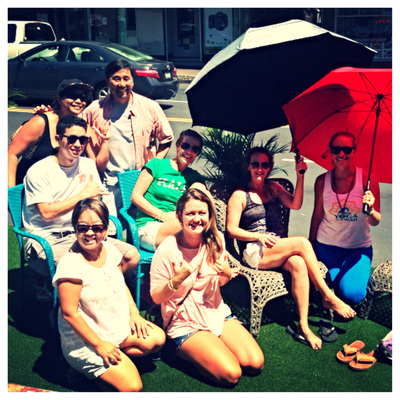
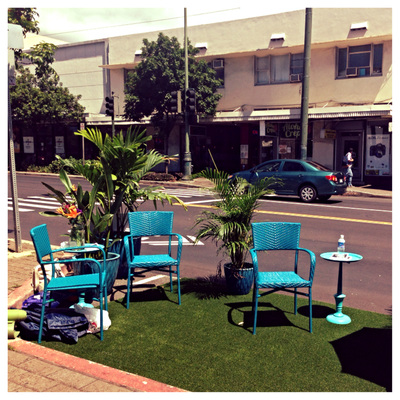
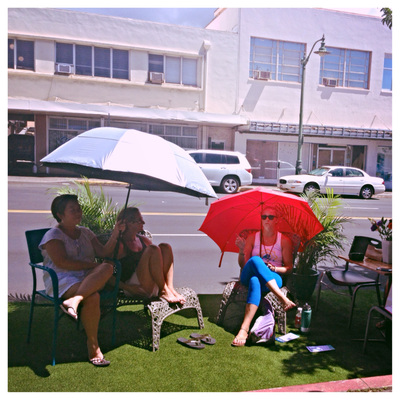
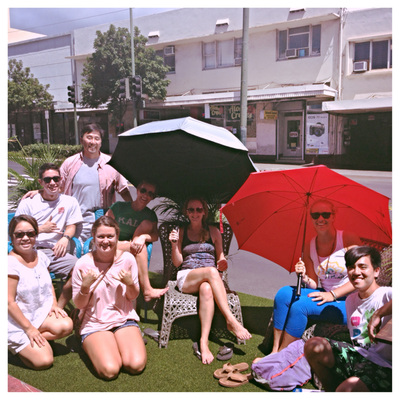
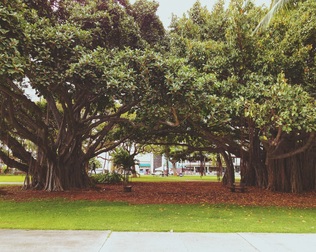
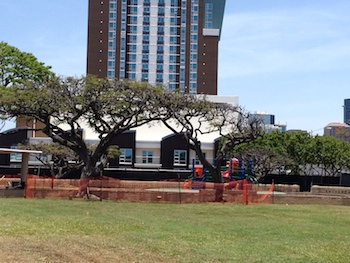
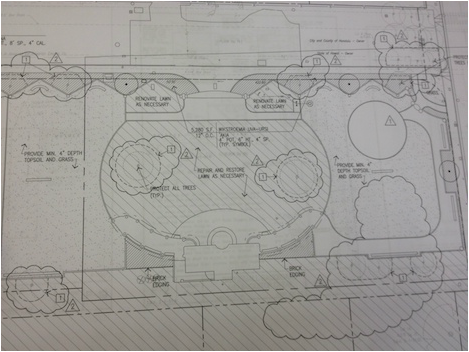
 RSS Feed
RSS Feed